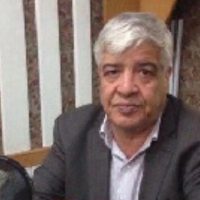Construction and Validation of Capacity Development Measure in Tehran Traffic Management based on UNDP Process Model
Author(s):
Article Type:
Research/Original Article (دارای رتبه معتبر)
Abstract:
Background and Objective
Traffic is a well-known term in human life today, which has acquired complex dimensions due to the specific characteristics of contemporary life, which tends to be more and more mobile and active, and therefore has become a critical issue in many metropolises of developing countries, especially Tehran. Accordingly, in order to manage Tehran traffic and successfully implement programs, one of the most important steps is capacity development. The purpose of this research is to validate local capacity development indicators for urban traffic management in Tehran based on the UNDP developed model.Method
This research was conducted in terms of a qualitative approach and with the content analysis method, and since it was the first time to build and validate a capacity development indicator for urban traffic management in Tehran, it is considered a developmental research and, considering its application to the authorities in charge and implementing Tehran traffic, and it is also considered an applied research. In order to collect data, semi-structured interviews with experts and scholars in the field of traffic and transportation in Tehran, as well as documents and texts related to UNDP capacity development, were used. The identification of these experts was continued using the snowball sampling method until theoretical saturation (including 12 people). Then, the obtained information was analyzed using the qualitative content analysis technique (inductive method) and using MAXQDA 2020 software regarding open, axial and selective coding. In order to examine the validity, prominent experts were used, including: 3 experts related to the field of urban planning and traffic in Tehran, 3 experts in the Tehran Municipality Transportation and Traffic Organization, 3 experts from the IRI Traffic Police, and 3 professors in the field of public administration and public policymaking. Their opinions were collected in the form of a CVI form, and reliability was calculated using the Cohen's kappa coefficient method.Findings
According to the analysis, a total of 22 categories and 139 local indicators (indicators/items) were identified and classified in the form of five axes of the UNDP capacity development process model. Of course, it should be said that the local indicators obtained were extracted according to the requirements and requirements of Tehran and can be used by decision makers in the field of traffic and transportation in identifying capacities and developing them for the effective management of Tehran's traffic.Results
So far, from the set of research conducted in Iran, no research on capacity development based on a capacity development model for Tehran's urban traffic management has been presented. In this research, the results of the work were presented in the form of a proposed conceptual model using local indicators appropriate for Tehran. In fact, it can be said that modeling the UNDP process model designed by the United Nations, after upgrading and localizing its indicators, can be used as a new achievement in the effective management of Tehran's traffic.Keywords:
Language:
Persian
Published:
Scientific Quarterly of Rahvar, Volume:13 Issue: 50, 2024
Pages:
25 to 66
https://www.magiran.com/p2829670
سامانه نویسندگان
مقالات دیگری از این نویسنده (گان)
-
واکاوی خط مشی های کارآفرینی در ایران
بیتا میرزا پور*، علیرضا فتحی، غلامرضا معمار زاده طهران، ابوالحسن فقیهی، کرم الله دانشفرد
نشریه مطالعات نوین علوم انسانی در جهان، زمستان 1403 -
"Providing a Skill Training Model for Organizational Innovation in the Automotive Industry (Case Study: Saipa Company)"
Hamid Foroozanfar, Morteza Musakhani*, Reza Vaezi, Seyed Mehdi Alvani,
Journal of Skill Training, -
ارائه الگوی راهبردی ساختار فضایی مناطق کویری و بیابانی ایران با رویکرد استقرار پایدار جمعیت با نگاه دفاعی و امنیتی، مطالعه موردی استان خراسان جنوبی
مجید سنایی*، سید مصطفی هاشمی،
نشریه آماد و فناوری دفاعی، تابستان 1402 -
Lacanian concept of consumer desire, The imaginary and symbolic orders
Mehdi Khademi Gerashi *, , Masoud Chitsaz
Journal of Business Management,


